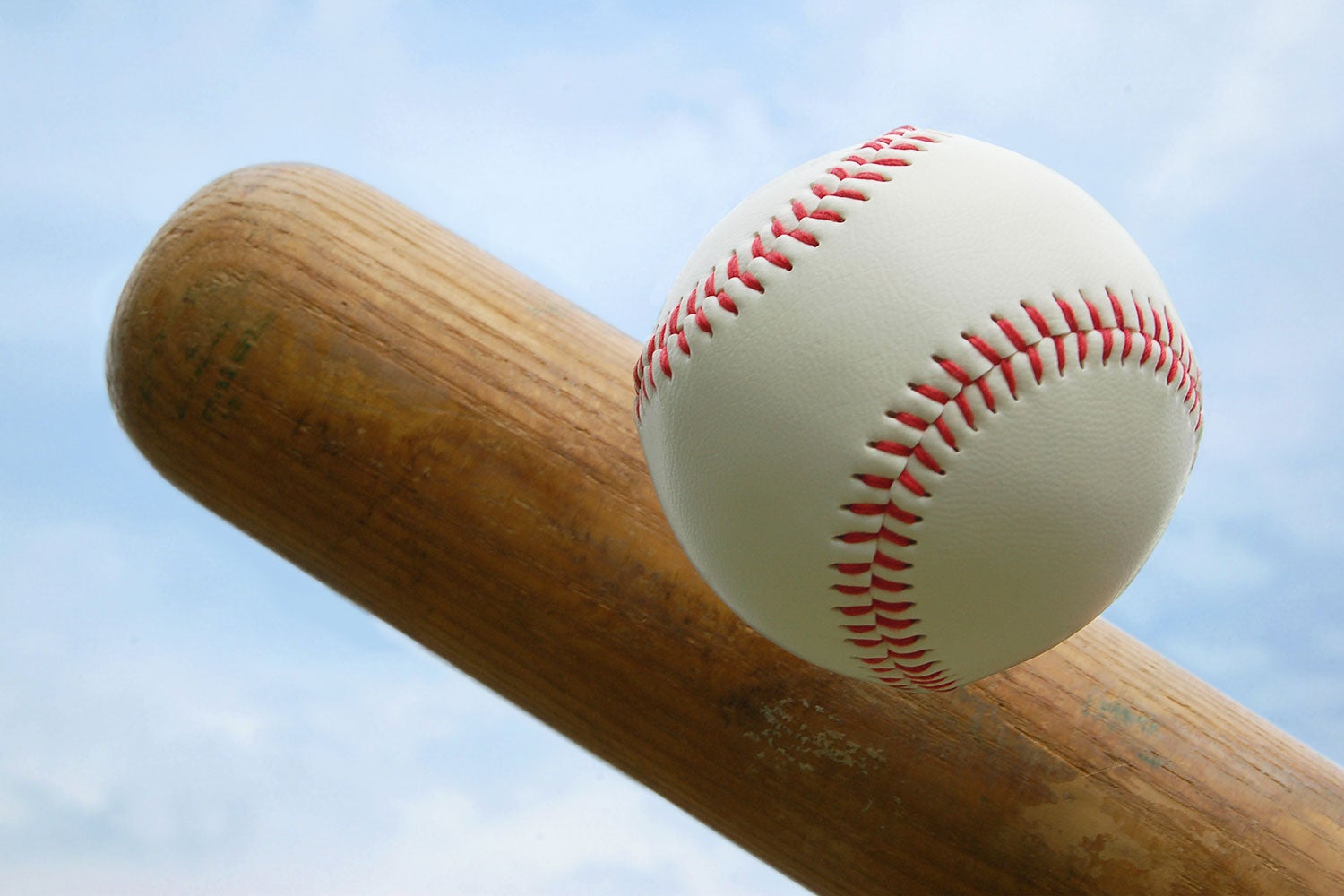Stanford physicist contributes analysis of home run increase
The home run rate has surged in the past several years and Major League Baseball wanted to know why. The league convened a committee of scientists to find out, including Stanford physicist Roger Blandford.
Home run rates in Major League Baseball have increased steadily since 2015. In 2017, the rate was 35 percent greater than it was before the All-Star Game in 2015. To understand the reason behind this sudden surge, the organization convened a committee of 10 scientists representing various fields to dig into pitching and batting behavior as well as physical features of the balls themselves.

Stanford physicist Roger Blandford’s work in fluid dynamics informed his study of the flow of air around a baseball after it leaves the bat. (Image credit: Getty Images)
Their final report, published May 24, ruled out nearly every explanation the group was able to study. They did present evidence for a change in the aerodynamic properties of the baseball itself but have yet to find its origin.
Roger Blandford, the Luke Blossom Professor in the School of Humanities and Sciences and a professor of physics and of particle physics and astrophysics at Stanford University, was part of this committee. He spoke with Stanford Report about the committee’s findings and the future work that might be done to understand this ongoing mystery.
How did you get involved in this committee?
I’m not entirely sure. I’m not a very likely candidate. I’ve played other games and grew up with cricket, but I’ve never played baseball. But I have worked in fluid dynamics – which is the flow of air around a baseball, for example – and so, in that sense, I was genuinely interested.
And I knew about the home run increase. While I wouldn’t describe myself as a rabid baseball fan, I lived in Southern California for a long time and my team is the LA Dodgers.
What different aspects of pitching, hitting and the ball did the committee look at?
Almost every conceivable explanation for the home run increase can be found on the web and some of them may turn out to be relevant. We tried to look at everything that we felt we could reasonably address. There’s also a fair amount of work that’s already been done by the people in Major League Baseball and those associated with it.
We examined, for example, were the batters being coached to hit the ball at a different angle? Were the pitches changing in any serious way? And was the ball different in any way? People said, you know, “the mud has changed” [new balls are rubbed with a special mud to improve grip] or “the stitching has changed.” These could provide plausible explanations but pretty well everything we looked at, we found nothing significant.
The one sort of question mark we had was the flight of the ball after it leaves the bat. There was some indication that the drag was reduced, which means the amount of friction associated with the ball flying through the air was less, so that it carried a bit farther. It only had to carry roughly 5 feet farther to explain the change. It’s possible that this may describe what happened but we did not explain it.
What was your focus as part of the committee?
Over the last four or five years, they’ve had systems in most of the parks that have monitored the pitches – what the speeds are and the spins and measurements like that – and these data are available. The clubs themselves have their own analyses of these and their own measurements. Some of that is obviously proprietary because they are in a competition.
I looked specifically at the “flight data” – the measurements of where the ball is as it leaves the bat or leaves the pitcher’s hand.
I also thought about the flow about the baseball. For me, it was quite interesting, as a physicist. I’m actually still thinking about it.
Given that some people believe the increase is due to “juiced” balls that bounce more, what did the committee assess in terms of the baseball itself?
Baseballs, as it turns out – and I didn’t know any of this beforehand – are quite complicated. Inside them there’s all this yarn, surrounding a solid “pill.” And then there’s leather outside and then the stitching.
My colleagues spent a fair amount of time going to the factory in Costa Rica, trying to figure out if there were any changes in the properties of the balls. They conducted laboratory tests as well and they didn’t come up with anything.
The committee offered a list of recommendations, including monitoring the climate environment where the baseballs are stored, monitoring and standardizing mud rubbing on the ball and further study of the drag properties of baseballs. What would be your personal recommendation for next steps?
There are people who do experiments with baseballs for a living. They fire them out of cannons and measure their trajectories, stick them in wind tunnels and look at the flow. If I wear my hat as a physicist – rather than as someone who watches sports occasionally – I would say the thing to do is to change the baseball in some serious way and then see what happens to the flight.
Perhaps the most important thing going forward is what is happening this year. We now have some experience analyzing this data, and so it would be a relatively straightforward exercise to take a new set of data from this year and then compare with previous years.
Anything else you took away from your work on this subject?
The more I thought about it as a physicist, the more astonished I became that human beings can hit major league home runs so often, even in the lean years, because the margin of error is so small. I’m confident I could never do it!
